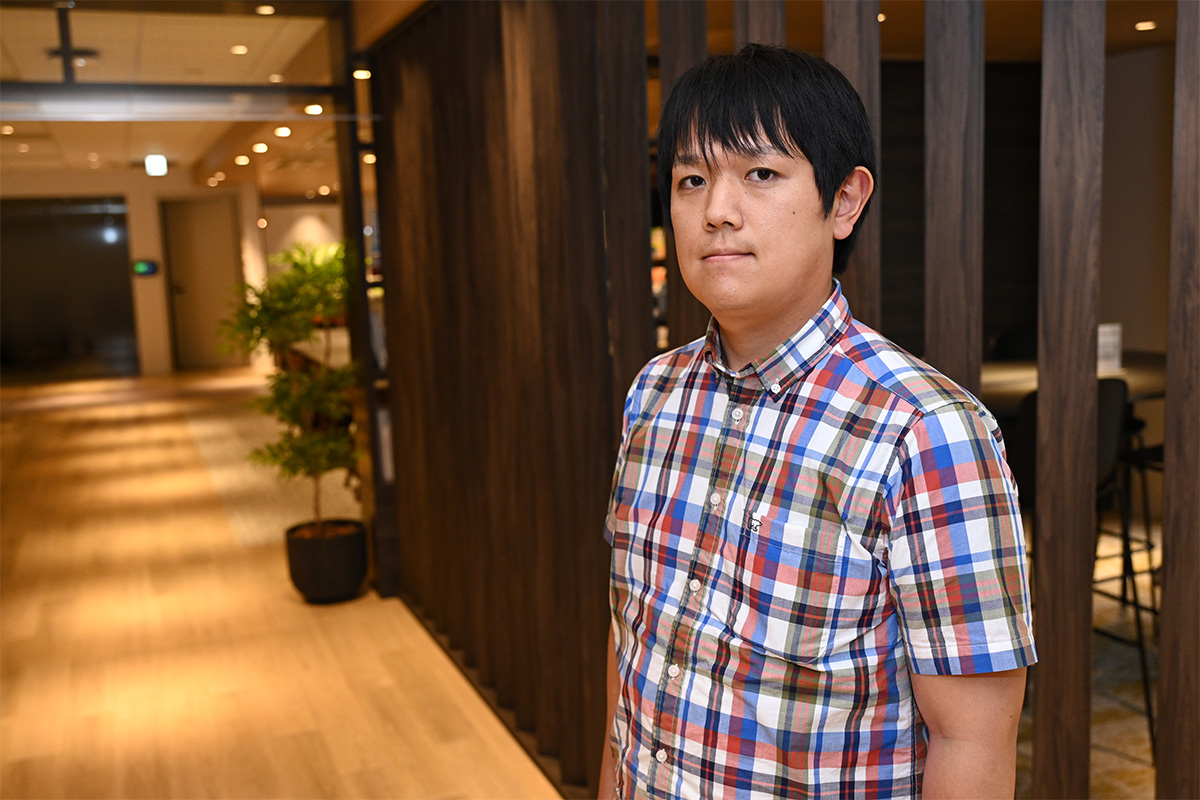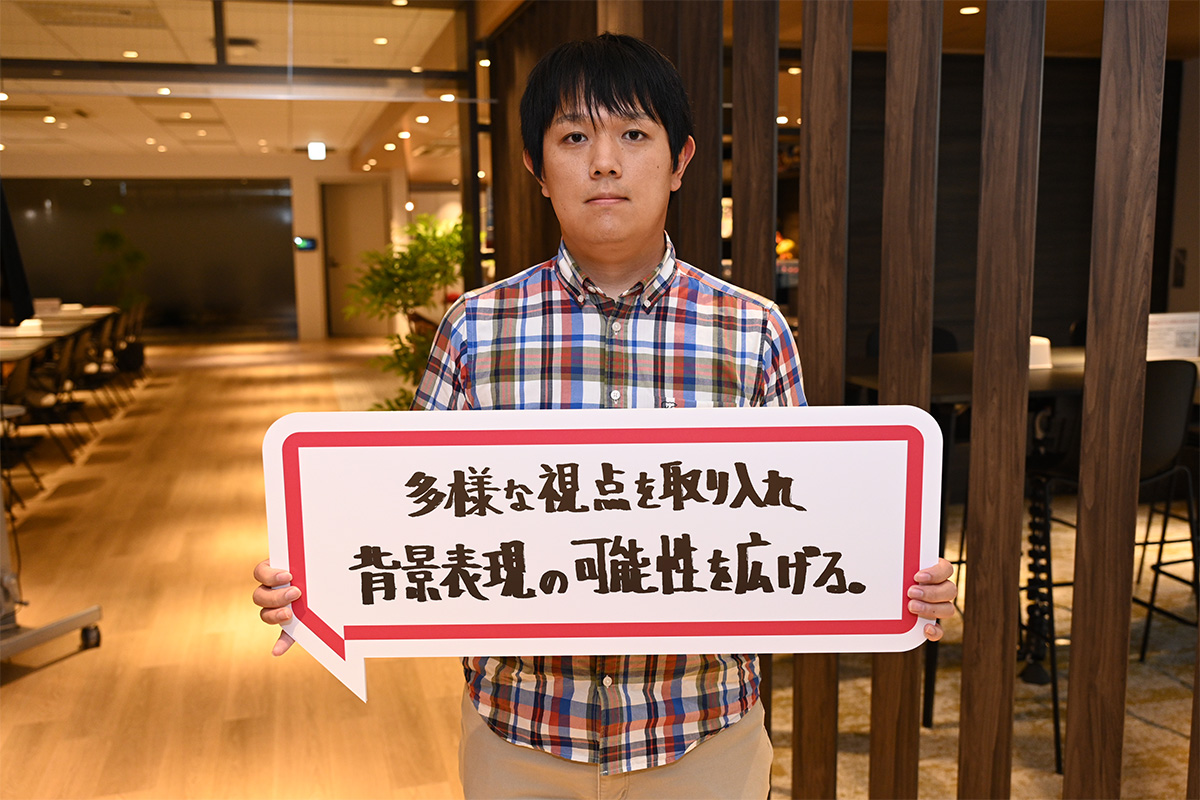In this episode, we sat down with Environment Artist Tatsuya Saito!

Environment Artist Tatsuya Saito
It Started From an Interest in Making Environments with 3DCG
―Can you tell us your current affiliation and what you’re working on now?
I’m currently in the Technical Artist (TA) Section of the company’s Art Studio.
I started my career as an environment artist when I first joined Bandai Namco Studios.
As I worked on producing environments, I developed tools that converted assets to whatever formats the project needed, used procedural technologies to increase my range of expression, and introduced workflows that made asset creation more efficient. My contributions to the projects I worked on has led to my assignment to the TA Section.
That said, the bulk of my work is still environment modeling for game projects.
Environment artists create the stages players play on in the game, as well as coordinate outsourcing work and give direction on assets made. The work they do is focused on delivering a better experience from both technical and artistic perspectives.
―Did you study computer graphics or similar specialist disciplines in school?
I originally worked at a job that had zero association with games and computer graphics, but I started becoming curious about it as I chased my interests.
My interests are drawing landscapes and exploring the town when I go on vacation. I spent my days making note of buildings and scenery that caught my eye during these walks, taking photos and sketching them down.
That led me to start looking at a portfolio website for artists working in games and cinematics because I wanted to increase my artistic ability, and that piqued my interest in creating 3DCG landscapes.
In the few years before I joined BNS, I was attending a technical school on my days off to learn the basics of 3DCG while working a day job.
It was really captivating to be able to walk around in and experience a space you made, especially when you use a game engine where you can make these environments intuitively.
All of these influences would increase my desire to work at a job where I could make scenery with 3DCG, and that started my journey to becoming an environment artist.
Now, most of my work is making environments for action games.

How Do You Model a Design that isn’t Finalized? Bringing Reality to a Fictional World
―Do you have any memorable stories to share since you started working at BNS?
I remember an experience that helped me grow as an environment artist where I wasn’t sure about the designs given to me, but decided to keep working on it instead of waiting for an answer.
I’ve been put in charge of making various scenery and objects on the project I’m currently assigned to.
Before I started working professionally, I thought the job of an environment artist was to accurately recreate designs that someone else prepares in advance. But the reality was that there are many times when there are no specific designs for a particular space, and the modeler could take the initiative to decide on the layout of a space or the design of an asset.
I’m sure each project has their own way of doing things, but it was a very valuable experience for me.
I struggled initially as I had little experience in design, but I was eventually able to think for myself about what should be done to make the game world more interesting and how environments should be built based on the provided concept art.
When I do asset supervision, I need to be able to communicate my intentions to other visual artists. Since my past experience taught me to think about and apply the design process, it’s also had a positive effect on how I communicate with other team members.
―Do you have some examples of what you think about during the environment design process?
We often make fictional worlds, so I constantly think about how we can make that world feel convincing through composition or the assets we make.
If we use a man-made space like a city or settlement as an example, we think about things like “Why is this city here?” or “What kind of people live here? What is their day-to-day like?” as we work. This way, the objects in the space feel less like decorations and more lived-in.
This extends to when we make assets for things that don’t exist in real life, like fantasy crystals. By superimposing natural mechanisms and imagining the potential processes and environments in which they’re formed, we can make that asset feel more realistic.
I love going to museums, and I try to look at every exhibit, from history and folklore to the natural sciences. I believe that taking in all kinds of information greatly helps me think about designs for things or how I can add storytelling to a space I’m creating.
―I can see how your interests and hobbies would come in useful.

Greater Possibilities for Expression by Creating Together
―What part of the job feels rewarding?
It feels particularly rewarding when I work with people from a variety of disciplines to create a single product.
A particularly memorable episode was when I was working on objects that could be destroyed by players ingame.
I was involved in the entire process, from thinking about how the system would work to the creation of the final visuals. When designing the destruction system and its visuals, I worked with the engineering, effects, and sound teams to finely balance load, realism, and feel. We went in with a plan for what we wanted, and many ideas for improvement came up as we implemented the system and discussed what was needed. We ended up making a high-quality system thanks to these constructive interactions.
This resulted in something that was even better than what we initially imagined, which felt very rewarding.
―Finally, which Bandai Namco Studios Value (Grow BNS: Challenge, Autonomy, Pursuit, Collaboration) do you keep in mind or pay special attention to as you work?
I am especially conscious of Collaboration.
Environment work involves people from a breadth of disciplines. We have a shared goal and everyone has to leverage their specialist knowledge to reach completion. Knowledge and technology lacking by the individual can be filled in by the perspectives and efforts of someone working in a different discipline, increasing the overall quality of the final product. I take care to be mindful of and respect everyone’s opinions when working, keeping close communication as we head towards our goal.
―Thank you very much!

Incorporate various perspectives to expand the possibilities of environment art




